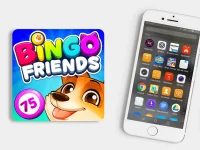How Streaming and Content Creation Are Reshaping Poker’s Popularity

Poker isn’t just a game of cards anymore—it’s a spectator sport, a form of entertainment, and a content goldmine. Thanks to streaming platforms like Twitch and YouTube, alongside a wave of charismatic creators, poker’s appeal has exploded beyond smoky backrooms and high-stakes casinos. Here’s how the digital age is dealing poker a winning hand.
The Rise of Poker Streaming
Twitch, the go-to platform for live gaming, has become poker’s unlikely ally. Streamers like Lex Veldhuis and Jason Somerville turned poker into must-watch content, blending high-level play with banter, humor, and real-time strategy breakdowns. It’s not just about the cards—it’s about personality.
And the numbers don’t lie. In 2023, poker streams on Twitch racked up over 50 million hours watched, a staggering jump from just a few years prior. Why? Because streaming demystifies the game. Newcomers can learn while watching, and veterans get to dissect pro-level decisions in real time.
Content Creators: The New Poker Ambassadors
Gone are the days when poker pros stayed behind sunglasses and stoic expressions. Today’s top players—and even amateurs—are building empires through content. YouTube channels like PokerGO and Doug Polk Poker offer everything from hand analysis to vlogs, making the game accessible and, frankly, fun.
Here’s what’s working:
- Educational content: Breakdowns of famous hands, strategy deep-dives, and “how to” guides.
- Behind-the-scenes vlogs: Showing the lifestyle, the wins, the brutal bad beats.
- Interactive streams: Letting viewers vote on plays or ask questions mid-game.
Why This Matters for Poker’s Growth
Poker had a reputation problem—too intimidating, too niche. But content creators flipped the script. By humanizing the game, they’ve attracted a younger, more diverse audience. Suddenly, poker isn’t just for math whizzes or Vegas regulars; it’s for anyone with a phone and curiosity.
The Impact on Live Poker Events
Streaming hasn’t just boosted online play—it’s breathed new life into live tournaments. Events like the World Series of Poker (WSOP) now feature live-streamed final tables with commentary, player cams, and even audience polls. The line between player and fan? Blurred.
And let’s talk about the “streamer effect.” When popular creators enter a tournament, viewership spikes. Their followers tune in, cheer them on, and—critically—start playing themselves. It’s a feedback loop that’s filling poker rooms (virtual and real) with fresh faces.
The Data Behind the Boom
| Metric | 2019 | 2023 |
| Twitch Poker Hours Watched | 12M | 50M+ |
| WSOP Main Event Entrants | 8,569 | 10,112 |
| YouTube Poker Searches (Monthly) | 1.2M | 3.5M |
Challenges and Controversies
Not everything’s a full house, though. The rise of streaming has sparked debates:
- Game integrity: Can streamers avoid giving away tells or strategy secrets?
- Overexposure: Some argue poker’s becoming too entertainment-focused, diluting skill.
- Burnout: Creating daily content while playing at a high level isn’t easy.
Still, the pros outweigh the cons. Poker’s more visible than ever, and that’s a net win.
What’s Next for Poker in the Digital Age?
The game’s evolution isn’t slowing down. Virtual reality poker, AI-assisted training tools, and even TikTok-style short-form content are on the horizon. One thing’s clear: poker’s future isn’t just in the cards—it’s on screens.
So, whether you’re a casual viewer or a budding pro, there’s never been a better time to get involved. The digital revolution has dealt poker a royal flush, and we’re all just along for the ride.







